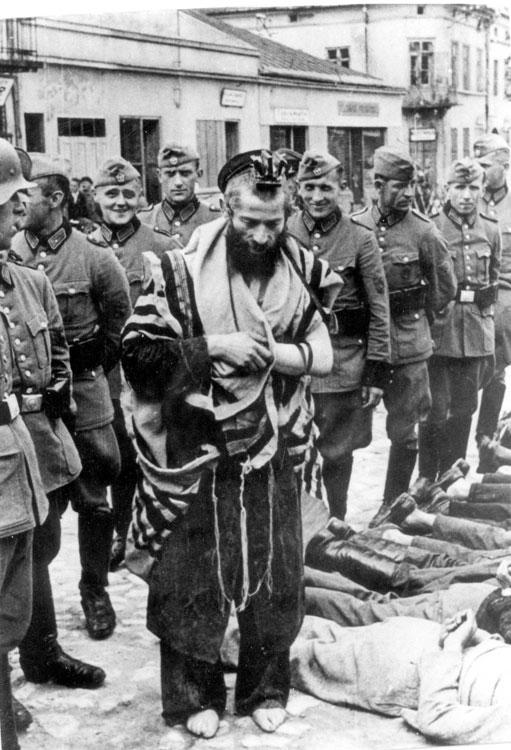Some 2,500 Jews lived in Olkusz between the two world wars, constituting approximately 25% of the total population. The Germans occupied Olkusz in September 1939. A small number of Jews, mainly youngsters, fled eastwards to USSR-controlled territory. With the occupation, the Germans started to persecute the Jews, loot their property, and confiscate businesses and private apartments. Jews were not permitted to walk on the main streets, and were forced to wear identifying marks.
In March 1940, some 3000 Jews lived in Olkusz. More than a third of them required assistance from the welfare department of the Judenrat, which distributed food parcels, meals in the soup kitchen and milk for the children, and also funded the kindergarten.
In late July 1940, a German policeman was murdered, presumably by members of the Polish Underground. In response, on 31 July 1940, a German police unit arrived and gathered all the Jewish men in the main square. There the Jews were forced to lie on the ground while the policemen and members of the SD “registered them”. During this process, the Germans brutally beat the Jews, murdering two of them. Rabbi Moshe Yitzhak Hagerman was forced to don his tallith (prayer shawl) and defiled tefillin (phylacteries, and to stand barefoot and pray next to the prostrate men of the Jewish community. At the end of the day, the Jews were permitted to return home, and the Germans left.
The Jews of Olkusz were sent to forced labor, initially in Olkusz and the surrounding areas, and from the fall of 1940, also to more distant labor camps. As well as being recruited according to lists drawn up by the Judenrat, Jews were also snatched off the streets or from their homes.
In September 1941, the Jews of Olkusz were moved into a ghetto in a suburb of the city. The Judenrat organized residential apartments in the designated ghetto area. The ghetto was not fenced in, but residents were not permitted to exit without being escorted. The overcrowding was severe, the food rations were meagre, and buying food from Poles was strictly forbidden. The Judenrat opened vegetable shops in the ghetto, and tried to provide for the needy, but many families were starving. On 2 March 1942, three Jews accused of smuggling food were publicly executed, and food smuggling ceased as a result.
An Aktion took place in Olkusz on 10 June 1942. Members of the Jüdischer Ordnungsdienst (Jewish Police) forced sick and elderly Jews out of their homes, and gathered them in the ghetto soup kitchen. At first, the Germans announced that they intended to deport about one tenth of the city's Jews, and that the lists drawn up by the Judenrat included only the weakest residents. The next day, the Germans surrounded the ghetto and rounded up all its inhabitants. The following day, a selection was carried out, and hundreds of Jews were sent to labor camps. According to a Page of Testimony submitted by Rabbi Hagerman's sister-in-law, Rabbi Hagerman was murdered in Majdanek in 1942. He may have been deported on that occasion.
On 13 June 1942, a transport of Jews from Olkusz and the surrounding villages left for Auschwitz. Two days later, the rest of the Jews of Olkusz were deported to Auschwitz, except for 200-300 Jews who were transferred to the Sosnowiec camp, including the Judenrat and Ordnungsdienst members and their families, Jewish hospital staff and the staff at the " Rossner Shop", a branch of the factory established in Bedzin by industrialist Alfred Rossner.







